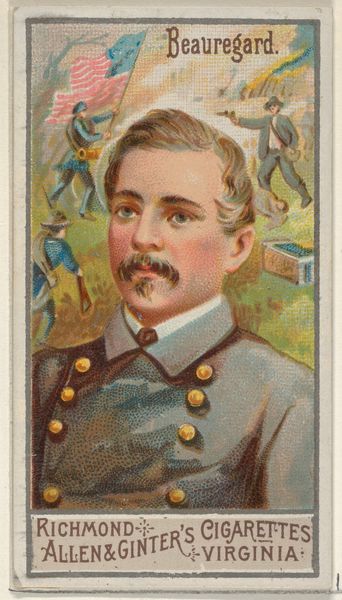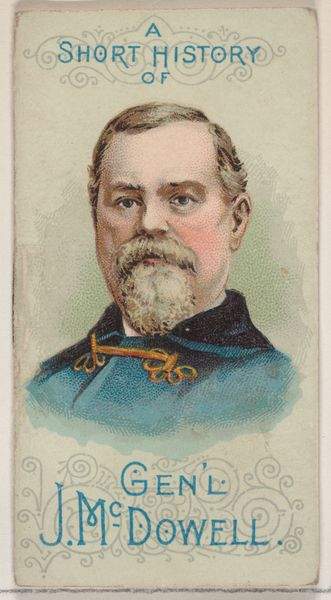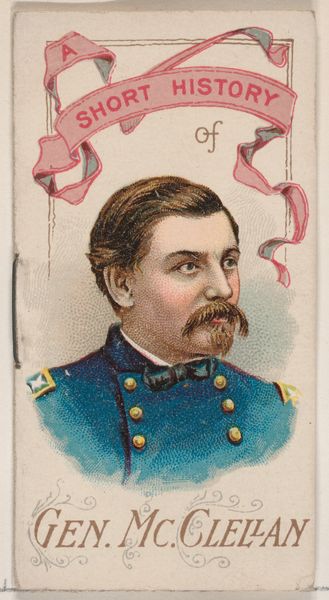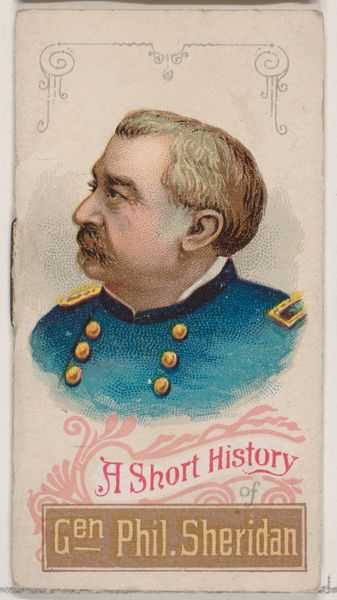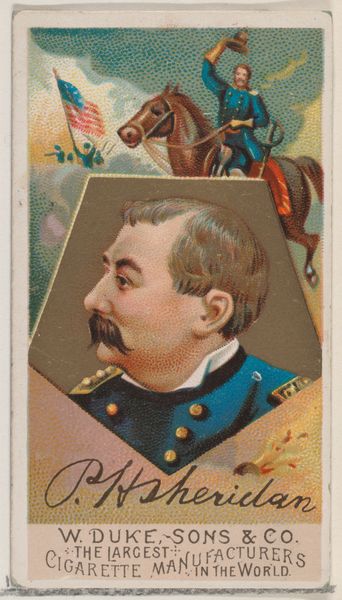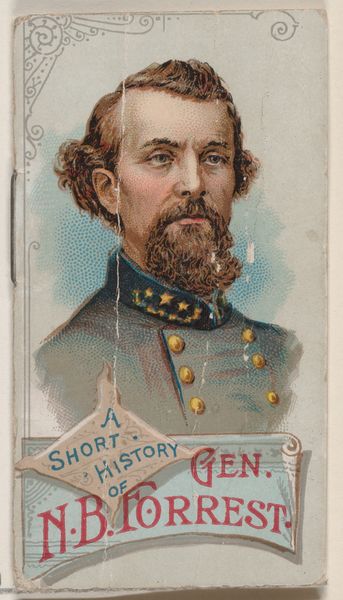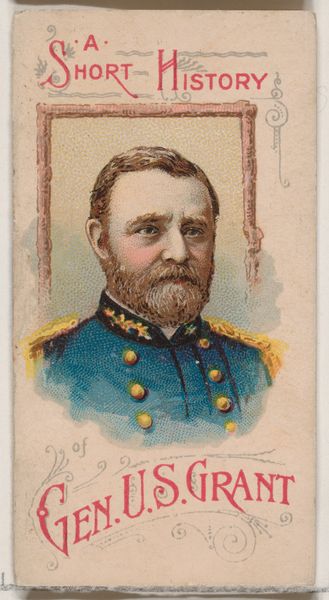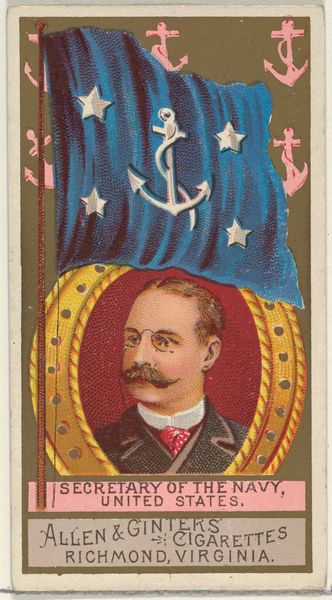
A Short History of General Winfield Scott Hancock, from the Histories of Generals series of booklets (N78) for Duke brand cigarettes 1888
0:00
0:00
drawing, coloured-pencil, lithograph, print
#
portrait
#
drawing
#
coloured-pencil
#
lithograph
# print
#
caricature
#
caricature
#
coloured pencil
Dimensions: Overall (Booklet closed): 2 3/4 × 1 1/2 in. (7 × 3.8 cm) Overall (Booklet open): 2 3/4 × 2 7/8 in. (7 × 7.3 cm)
Copyright: Public Domain
Curator: Here we have "A Short History of General Winfield Scott Hancock," a colored lithograph from 1888, part of the Histories of Generals series made for Duke brand cigarettes. Editor: It’s immediately striking, this diminutive scale! The rosy hues give it a saccharine, almost unsettlingly cheerful mood. Curator: Indeed. It speaks to the intersection of military celebrity and consumer culture during the late 19th century. These cards served as promotional items, shaping public perceptions of historical figures, in service to commerce. Editor: I am most interested in the use of colored pencil in the lithographic process. The careful gradations of peach across the General's face, played against the uniform’s blue, generate dimensionality from a palette otherwise leaning toward flatness. It calls attention to itself. Curator: These were mass-produced items. The caricature helps make history accessible. Winfield Scott Hancock was a celebrated figure after Gettysburg. The card simplifies a complex figure, placing him neatly in the context of the idealized heroes then shaping national identity. Editor: Note, however, that flattening I mentioned comes from the aggressive symmetry; ribbons flank a rigidly centered frame that itself contains equally rigid, symmetrical text, all creating a very self-conscious viewing experience. The aesthetic aims for clarity, but its structural artifice cannot be ignored. Curator: These images served a distinct social function, not merely selling cigarettes but distributing curated images of power to a wide audience, primarily white men. Editor: And its presentation achieves an unsettling, self-referential quality through this careful organization of color and geometry, all to present and promote, quite openly, the 'History' of a person—and a commodity. Curator: Understanding the cultural purpose, we grasp the significance of popular prints within a visual landscape, revealing assumptions about the past. Editor: Agreed; a deceptively small piece hinting at broader aesthetic and political landscapes.
Comments
No comments
Be the first to comment and join the conversation on the ultimate creative platform.
